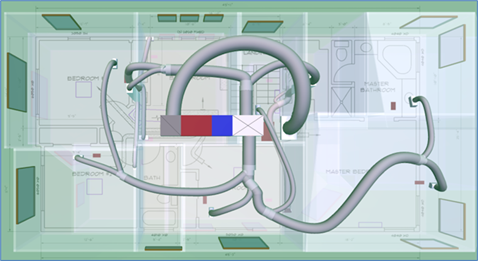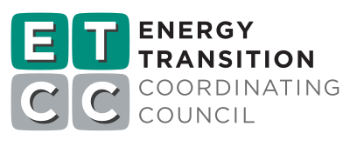 Project Title
Project Title
Central Valley Research Homes: Evaluation of Duct System Conduction Losses in Variable Capacity Heat Pump Systems (2021-2022)
Project Number ET22PGE1903 Organization PG&E End-use HVAC Sector Residential Project Year(s) 2021 - 2022The purpose of this project was to evaluate the impact of heat conduction losses through attic ductwork on the energy performance of variable capacity heat pumps (VCHP). Four duct scenarios were evaluated:
- Ducts in conditioned space
- Attic ductwork with surface area and insulation typical of older existing homes
- Improved ductwork redesigned to reduce the surface area and highly insulate the ducts located in the attic
- Attic ductwork typical of a modern two-story tract home with upstairs / downstairs zoning
These evaluations were conducted at the Central Valley Research Homes (CVRH) laboratory test houses, specifically the Caleb and Grange houses. Ductwork at both houses is very low leakage, so the monitored duct losses are predominantly due to heat conduction. Grange has two attic duct systems: one compact and well insulated system installed in 2013 and one that approximates the original pre-2013 duct system. Caleb only has one attic duct system, which is zoned upstairs and downstairs. Both houses have an additional duct system that is located entirely within the livable space, which is used as the “ducts fully in conditioned space” reference.
The compact attic ductwork at Grange demonstrated energy use performance very close to that of ducts fully in conditioned space (7% increase in cooling and 2% increase in heating). The attic duct system that approximates the original Grange duct system increased cooling energy by 57% and heating energy by 37% compared to ducts in conditioned space. The attic ductwork at the Caleb house increased cooling energy by 34% and heating energy by 19% compared to ducts in conditioned space.
Attic ductwork also increased cooling peak demand compared to ducts in conditioned space. This was even true of the short attic duct system at the Grange house, indicating that even a relatively small surface area of well insulated ductwork can influence demand when the attic is very hot.
In general, recently constructed homes in California with higher efficiency attics can be expected to remain at more moderate attic temperatures and consequently experience less severe duct conduction losses compared to older existing homes. Improving existing attic ductwork represents a large energy saving opportunity. Past efforts have mainly focused on sealing leaks, but heat conduction is also a major contributor to duct losses. Heat conduction losses are especially important for VCHP systems due to the increased amount of time air is moved through the ductwork when VCHP systems operate continuously at low capacity compared to single speed systems that cycle on and off.
Key recommendations include:
- Building standards should encourage improvement of existing attic duct systems during retrofits, including requiring improved design when attic ductwork is replaced and improvement of the existing duct condition when HVAC systems are replaced.
- Energy efficiency programs should encourage improvement of existing attic duct systems during retrofits, including:
- Incentivizing complete duct system redesign and replacement with shortened and highly insulated ductwork (R8 or greater),
- Incentivizing relocating ductwork into conditioned spaces when possible,
- Requiring HVAC load and system sizing calculations, including appropriate duct design for system airflow and capacity.
- Workforce education and training efforts should address attic duct conduction losses and emphasize the importance of duct system design and placement.
